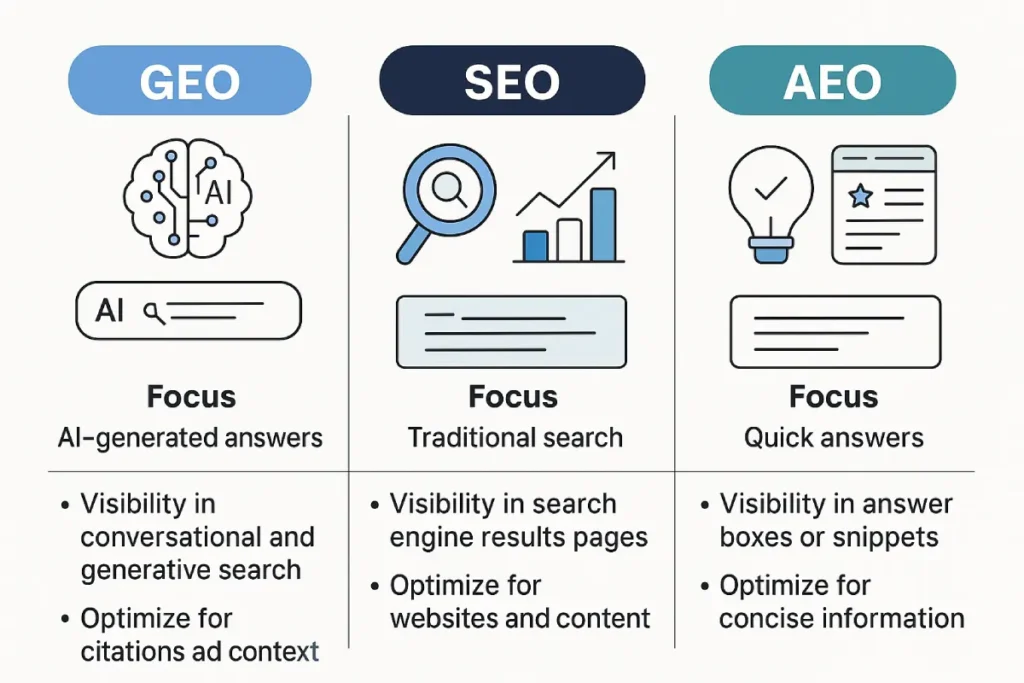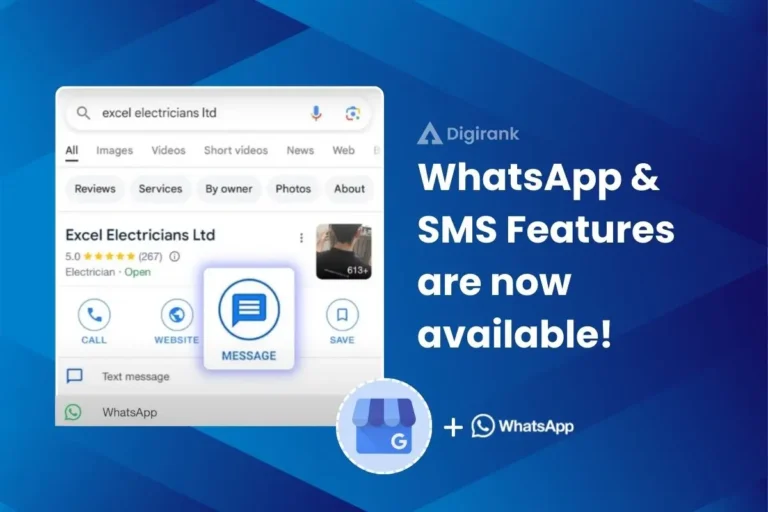What Is GEO (Generative Engine Optimization) – A Complete Guide
Here’s the thing: search isn’t just about blue links anymore. People now rely on AI chatbots, generative search tools, and voice assistants to get instant answers. That shift has created a new discipline called GEO—Generative Engine Optimization. If you’re wondering what is GEO (generative engine optimization) and how it fits into modern digital marketing, this guide lays it out clearly.
Think of GEO as the evolution of SEO. It helps your brand appear inside AI-generated responses, summaries, conversational answers, and intelligent search platforms. With this guide, you’ll navigate how GEO works, why it matters, and how you can apply it to stay visible in the AI era.
What Is GEO? (Generative Engine Optimization)

GEO is the practice of optimizing your content so generative engines can understand it, trust it, cite it, and include it in AI-generated answers. A helpful early breakdown of the concept can be found in this detailed overview from AIOSEO.
Generative engines look beyond keywords. They examine clarity, structure, authority, context, and how well your content aligns with user intent. GEO ensures your content is ready for this AI-centered world.
Scope of GEO
Before diving deeper, it’s helpful to understand the geo meaning in this context: GEO refers to generative engine optimization, not location-based geo tagging.
- Practice: Improving content so AI can interpret and surface it.
- Influence: Helps brands appear in AI answers across multiple platforms.
- Target Platforms: Google SGE, Gemini, ChatGPT, Perplexity AI, Bing Copilot, and voice assistants.
- Alternative Terms: GEO connects closely with related ideas such as geo digital marketing, geo SEO, and what is generative SEO, all pointing to strategies focused on AI-driven visibility. Generative SEO, LLM Optimization, and AI Visibility Optimization.
GEO vs SEO vs AEO
Many marketers confuse GEO with geo tagging, but geo tagging refers to location-based metadata, while GEO focuses on visibility in generative search.

GEO doesn’t replace SEO. It enhances it. To understand the difference:
GEO Focus: Visibility inside AI-generated answers and citations.
SEO Focus: Ranking on search engine results pages.
AEO Focus: Optimizing content for short, fact-based answers.
Unified Strategy: Modern search requires blending all three.
Search Model Shift: Traditional SEO depends on links and keywords — learn more about what is SEO. GEO relies on meaning, authority, and structured clarity.
History and Emergence of GEO
GEO grew as AI search tools became more mainstream and the way people search evolved.
Origin of the Term
The concept surfaced with the rapid adoption of AI overviews and conversational search tools.
Rationale for Emergence
- Drop in traditional search volumes (Gartner’s prediction).
- AI chatbots are becoming primary information sources.
- Growth of zero-click searches.
Industry Adoption
Forward-thinking companies now integrate GEO alongside SEO as a core part of digital marketing.
Benefits of GEO
GEO matters because it pushes your brand where users actually look.
Increased Reach Beyond SERP: Your content can appear inside AI answers, not just search results.
Enhanced User Experience: AI delivers quick, context-rich answers. GEO ensures your content fuels those responses.
Competitive Advantage: Early adopters of GEO gain higher visibility.
Brand Authority: Content that AI trusts increases credibility.
Data-Driven Insights: New GEO metrics offer fresh visibility indicators.
Future-Proofing: As AI dominates search, GEO becomes essential.
Addresses Drop in Search Volumes: Gartner’s predictions show traditional search declining. GEO keeps you relevant.
How GEO Works (Implementation Strategies)
Implementing GEO requires aligning with how AI understands and structures content.
Generative AI Research & Analysis: Understand how AI engines interpret topics. Use reliable resources and SEO tools to analyze search intent, query patterns, and content gaps.
Content Quality & Relevance: Clear, helpful, factual content works best.
Content Structure & Clarity: AI prefers well-organized, scannable sections.
Distribution & Engagement: The more your content is referenced, the higher the credibility. Combine GEO efforts with strong local presence and listings — for example, optimise your profile with local SEO and Google Business Profile optimization.
Brand Authority & Credibility: EEAT principles (Experience, Expertise, Authority, Trustworthiness) matter more than ever.Technical SEO as Foundation: GEO builds on strong technical foundations; strong technical SEO remains essential rather than optional.
Metrics and Measurement in GEO
GEO introduces its own measurement style.
- Generative Appearance Score: How frequently your brand appears in AI-generated answers.
- Share of AI Voice: Proportion of brand mentions inside generative results.
- AI Citation Tracking: Shows where AI references your content.
- KPI Adaptation: Traditional SEO metrics now expand to include AI impact.
Evolution of AI Platforms
AI-driven systems are changing how people search. Users expect quick, direct answers instead of long result pages. GEO helps brands stay present across both traditional and AI-first platforms.
- Traditional Search Engines: Still useful, but not the only entry point.
- Dedicated Generative Engines: Platforms like Perplexity, ChatGPT, and Gemini are shaping the future.
Frequently Asked Questions
What is GEO used for?
GEO helps brands appear inside AI-generated answers and improve visibility across AI-driven platforms.
How do I do GEO for my website?
Improve content clarity, structure, authority, factual accuracy, and EEAT signals.
What is an example of GEO marketing?
A business optimizing its content so Perplexity AI includes it in research summaries.
How does GEO work?
It aligns content with generative AI’s understanding of patterns, so AI engines can trust and surface it.
Conclusion
The shift toward generative search is already here. If your content isn’t optimized for AI engines, you risk losing visibility where your audience is actually searching. GEO helps your brand show up in AI answers, stay competitive, and maintain authority.
If you’re unsure how to optimize your site for this new era, Digirank can help. From GEO audits to content restructuring, we’ll guide you through every step. Reach out today and let’s build your AI-ready visibility together.







